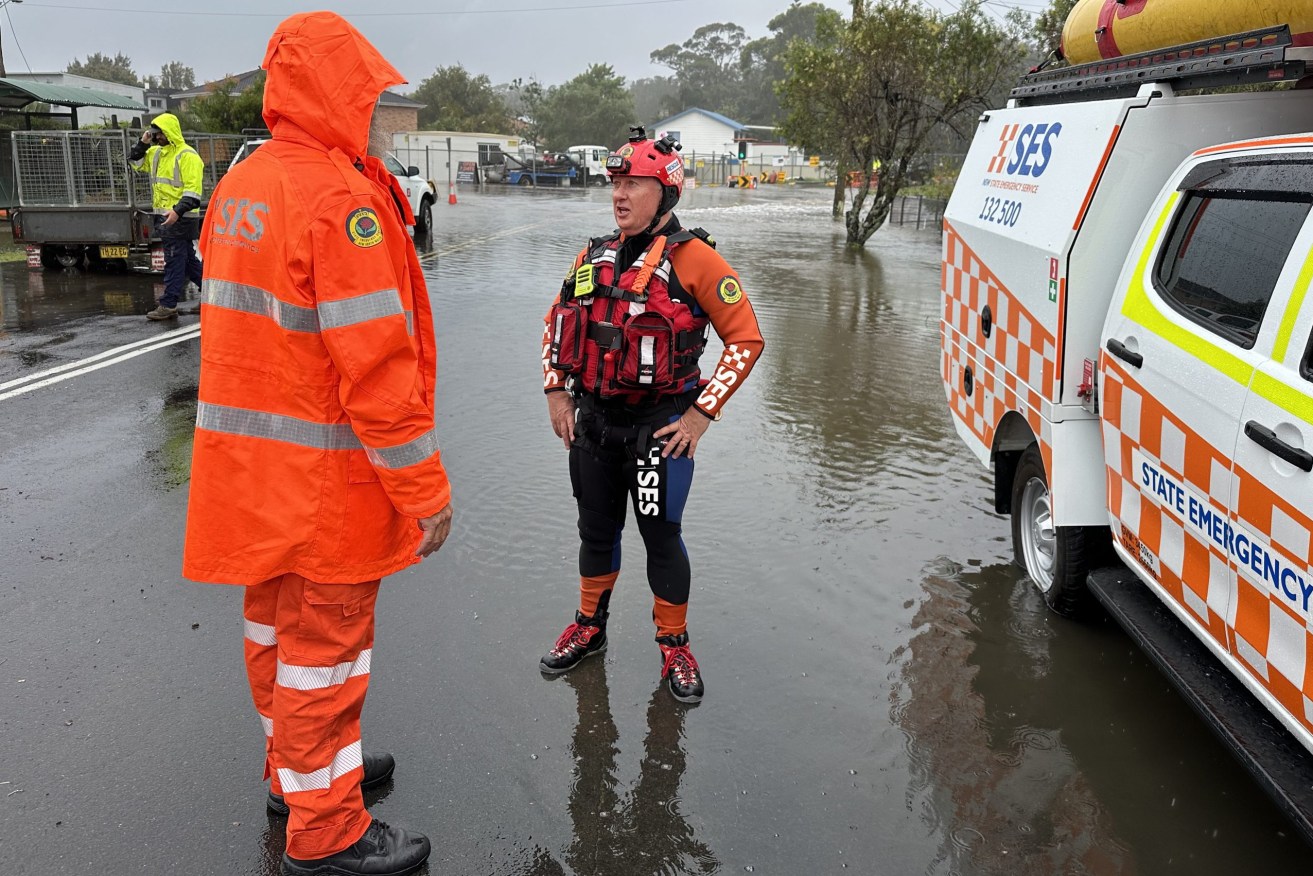How pollies ‘weaponised’ our weather – and why bureau keeps getting it wrong
What would we do if we couldn’t talk about the weather? And imagine how boring life might be if Gary Youngberry and his cronies were a bit more accurate, writes Greg Hallam


NSW SES Flood Rescue Technicians at Lake Conjola on the NSW South Coast on Wednesday November 29, 2023. State Emergency Services have responded to hundreds of calls as parts of NSW and Victoria were battered by wild weather. (AAP Image/Supplied by NSW SES)
Ahh, the weather – the most discussed, abused , confused, misunderstood and misrepresented topic over the Christmas holiday period (and any other time, for that matter).
Everyone from two -year-olds to centenarians have something to say about the weather, especially this time of year when we have more idle time and holidays, sport and even farming – all of which are highly dependent on it our nightly forecasts.
With the juxtaposed surfeit of rain across Queensland, at a time when we are supposed to be in an El Nino event (think drier than normal – if not a drought) and rapidly-forming storms catching everyone off guard on the Gold Coast. It’s weather central and the debates rage.
One thing is for sure , the weather has been weaponised over the past decade. There is no “ ordinary” weather any more , or that’s what we see, read or hear.
Both the left and right of politics have turned it into the theatre of the absurd. Its supersized with fries , or a global conspiracy against mining and agriculture by science.
Sitting behind it, of course , is the climate change debate. While the debate has largely moved on to one facing up to the causes of climate change, its mitigation and paying the price; the diehards wont have a bar of it.
As an aside, over the Xmas New Year break I read a cloud cuckoo website with an absolute bobby dazzler of a quote from the legendary weather forecaster Inigo Jones, supposedly on climate change. the only problem is Inigo died in 1954.
In my misplaced desire to become more informed on the foibles and determinants of the weather, and in the absence of test cricket over five days , I did a welter of research to form my own view .
Now I must warn readers – as an expert on the weather – I make a very good economist. I did, however hold to my academic training (Indiana School) of forming an observational understanding of the subject, rather than starting with a theory. Then devoured huge amounts of written and peer reviewed material.
In short, the weather so-called has a million moving bits. It spans the very micro from local suburbs to whole oceans.
Of interest, there are no degree courses on weather. Rather, it’s based on general science, specifically physics and a good smattering of probability and computing and much studying of historical patterns.
The main way the weather is forecast includes observing the motion of air and clouds in the sky, examining change in air pressure gradients, and comparing those findings to previous patterns. As with all modernity, the weather models, and there’s plenty of them , are computer-based, driven by algorithms, dependant on human assumptions. Satellite images and surface maps feed into those models.
There’s global weather systems, regional systems and localised variations.
Bringing the argument closer to home there are three, arguably four major weather systems that drive most of our weather in Queensland .
Sometimes it’s the confluence of two , if not three of these big systems that determine what sort of day, week or season we are going to endure . The best known weather pattern phenomenon is the Southern Oscillation Index, more generally called El Nino/ La Nina, based on varying water temperatures in the Pacific Ocean, namely off South America and the Queensland Coastline.
It has somewhere between 6 months and three year long run cycles. Then there’s the lesser known Madden Julian Oscillation, a weather system that affects Northern Australia, including Queensland’s Gulf of Carpentaria and Cape York – driven by both Indian and Pacific Ocean influences.
Unlike the lovely Las that is a stationary system ,this one is a moving weather pattern that crosses from West to East on a 60-90 day pattern. Add the Indian Ocean Dipole which, while long existent has only recently found our way into our weather vocabulary – it’s more like the Ninos and is a long-run weather pattern. It impacts as much as half of our state-western areas .
Finally, there are polar vortexes which originate in the Antarctic and can produce profound weather impacts on Queensland when they mix with the aforementioned weather systems, especially adding cold air and instability- think wild storms.
At its most fundamental level the weather is influenced by local topography – the height and existence of nearby mountains and other natural features.
Recent debate has focussed on the limitations of weather models – especially those operated by Australia’s Bureau of Meteorology, a federal government agency. Think Gold Coast’s Xmas Day/Boxing Day severe storms which packed a punch equivalent to a Category 2 Cyclone, and were said to have formed with 15 minutes. Those attestations are now the subject of an independent review.
By way of comparison, cyclones form over days, sometimes a week and are the subject of international studies.
Having enjoyed the very rare privilege of sitting in on the Queensland Disaster Management Committee of Cabinet for 20 years across three different governments and five premiers as an Ex Officio member representing councils, I observed first hand the use of up to seven different weather models (including the US Navy and NASAs offerings) and indeed a consensus model of all seven separate models , the science is exhaustive .
The challenge is to bring that level of precision and probability to very local and fast moving weather events.
The Federal Government needs to pony up and follow the Biden Administrations lead by urgently funding the roll-out of Doppler Radar technology in high risk areas. It’s the state of the art technology to track storms. The solution is at hand.
I hope you are just as confused about the ins and outs of weather as I am; it’s not a dart board, nor is it rocket science – but ain’t far off .












